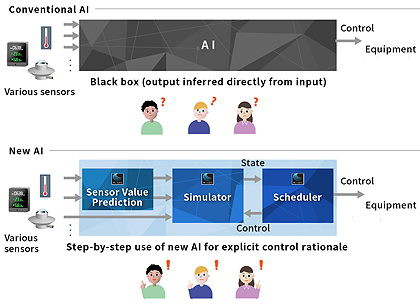Rather than relying on sensor measurements, the new technology estimates the characteristics of a control system’s operating environment, and uses simulation to identify and quantify physical parameters. It can use past working data to learn sensor values and physical quantities, and thus to predict future changes in an operating environment and create an optimal control plan.
In many AI technologies, including deep learning, the reasoning processes are effectively “black boxes”, making it difficult to specify the basis for control. Moves are underway to eliminate these black boxes, including legal regulations in Europe and the establishment of AI guidelines in Japan.
Mitsubishi says that by clearly indicating the basis for the control and the future state of systems when using AI, the new technology will help users to understand the rationale for AI-based control. It will allow both the basis and the accuracy of the controls to be visualised, confidence to be raised, and equipment operation to be confirmed, thus lowering the hurdles to deploying AI. It will also allow facility managers to clarify the basis of control when responding to problems.

Unlike traditional AI-based control systems (top), Mitsubishi’s new system (bottom) allows users to understand how the AI is working
Mitsubishi Electric plans to develop practical applications for systems that require clear control rationales – such as infrastructure facilities and air-conditioning systems – and is aiming to commercialise these applications “as soon as possible”.
Mitsubishi Electric: LinkedIn Facebook

